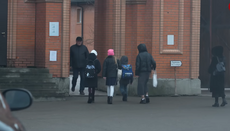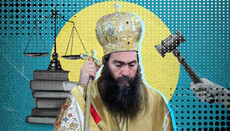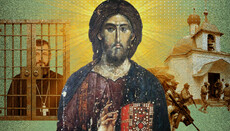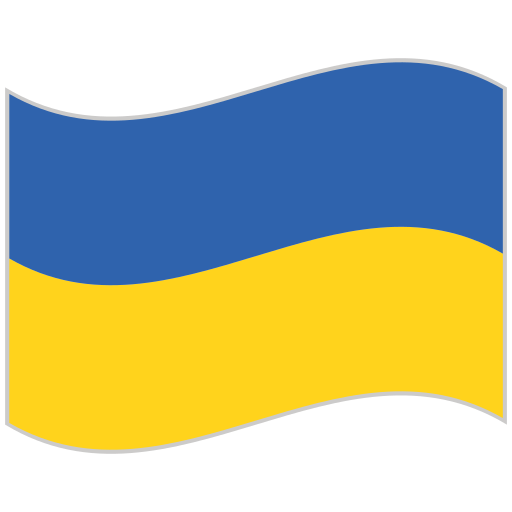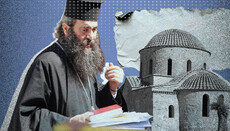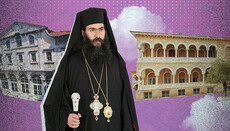Why UGCC is not the “Kyiv Church” and why one should not trust its leader
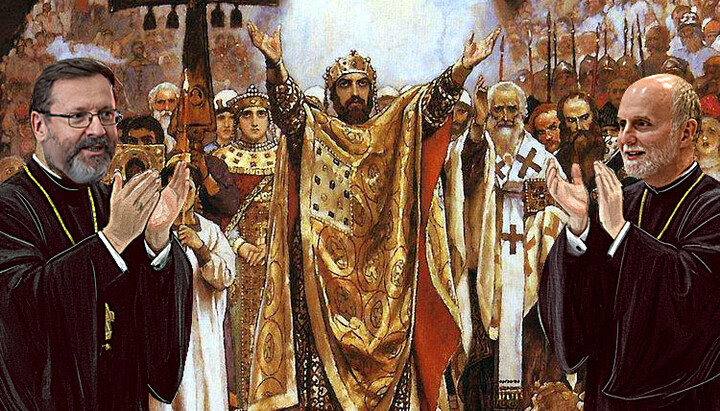
The head of the UGCC has moved from manipulations to the broadcasting of outright falsehoods. Let us analyze this in detail.
On August 17, 2025, the head of the Ukrainian Catholics of the Byzantine rite, Sviatoslav Shevchuk, met with youth in the Uniate cathedral in Kyiv and tried to persuade the younger generation that his religious organization did not arise as a result of the Union of Brest in 1596, but rather in the baptismal waters of the Dnieper in 988.
Moreover, the historical fact that the UGCC traces its origin to 1596 Shevchuk branded as “Moscow propaganda.” He also declared that the UGCC is “the only Ukrainian Church which, within itself, unites the worldwide Ukrainian community.” And the following day, on August 18, 2025, during a round table, Shevchuk asserted that the UGCC does not belong to the structure of the Roman Catholic Church.
All of these loud claims – and many others – were voiced in the context of the anniversary of the transfer of the residence of the head of the UGCC from Halychyna to Kyiv. Or rather, as the UGCC prefers to say, not a “transfer” but a “return.”
The moral-ethical system of the Jesuits
But before turning to a historically grounded refutation of these Uniate narratives, it is necessary to indicate why the head of the Uniates communicates such blatant falsehoods to his audience.
We do not know whether S. Shevchuk is formally a Jesuit or not, but the ideology of that order exerts a powerful influence on the worldview of many Catholics and, to a large extent, shapes the behavior of the leaders of the Catholic Church.
The motto of the Jesuit order, coined in the sixteenth century by its founder Ignatius of Loyola, is: Ad maiorem Dei gloriam inque hominum salutem (“for the greater glory of God and the salvation of humanity”). If, in pursuit of this goal (as the Jesuits understand it), one must commit some immoral deed or transgress a commandment of God, this is deemed permissible and justified. Scholars of the Jesuit order highlight three elements upon which their moral-ethical system rests:
- Intentionality. According to this principle, sin consists only in acts consciously directed toward a sinful goal. If everything is done “for the greater glory of God” (Ad maiorem Dei gloriam), then the sin is excused or at least forgivable.
- Mental reservation. That is, one may invest words with an entirely different meaning – sometimes even the direct opposite – and such words will not be considered false. Any false statement ceases to be regarded as a lie if one mentally (precisely mentally) adds the phrase “perhaps” or something similar.
- Probabilism. According to this principle, the resolution of doubtful questions is guided not by moral or ethical considerations, but by what is useful for achieving the chosen end.
That Shevchuk distorts the truth, gives absurd interpretations to historical facts, or directly transmits lies fits neatly into the Jesuit concept, which, let us stress again, has had enormous influence on the whole Catholic mentality. Why do we emphasize this so strongly?
First, in order to show that the voicing of such false narratives is not simply Shevchuk’s personal style, but a characteristic trait of a significant portion of Catholicism as a whole. For the Uniates – the Greek Catholics – this is all the more characteristic, since throughout their 400-year history they have been compelled to prove, to their Catholic audience, that they are Catholic, and to their Orthodox audience, that they are Orthodox. Second, to view with this perspective the words and actions of certain Orthodox hierarchs: do these not also fit into the above-described scheme of Jesuit morality?
The first falsehood: The UGCC is not part of the Roman Catholic Church?
Here is the exact quotation of Shevchuk from August 18, 2025: “We (the UGCC – Ed.) are a local Church which lives in communion with the Roman Pope, but we do not belong to the Western Patriarchate. We are building our own.”
From these words it follows that the UGCC is allegedly linked with the Vatican only by eucharistic communion, but is not subordinate to Rome administratively. It may even seem that the UGCC and the “Western Patriarchate” are, in a sense, equal local churches. But in reality the UGCC is part of the administrative structure of the Catholic Church, and not merely in communion with it. Independence among local Churches, equal in canonical status, is a feature of Orthodoxy. In Catholicism things are entirely different. One cannot be Catholic without being fully subject to the authority of the Roman Pope and his curia.
Here is what the Catechism of the Catholic Church says: “The Roman Pontiff, by reason of his office as Vicar of Christ and pastor of the whole Church, has full, supreme, and universal power over the whole Church, a power which he can always exercise unhindered.”
Canon 331 of the Code of Canon Law of the Catholic Church says the same: “The bishop of the Roman Church, in whom continues the office given by the Lord uniquely to Peter, the first of the Apostles, and to be transmitted to his successors, is the head of the college of bishops, the Vicar of Christ, and the pastor of the universal Church on earth. By virtue of his office he possesses supreme, full, immediate, and universal ordinary power in the Church, which he is always able to exercise freely.”
Canon 333 of the Code underscores the pope’s authority over all church structures belonging to the Catholic Church: “By virtue of his office, the Roman Pontiff not only possesses power over the universal Church but also obtains the primacy of ordinary power over all particular churches and groups of them. Moreover, this primacy strengthens and protects the proper, ordinary, and immediate power which bishops possess in the particular churches entrusted to their care.”
The UGCC, as a structural unit of the Catholic Church, belongs to the so-called Eastern Catholic Churches of their own law (sui iuris). There are 23 such churches in Catholicism, 14 of them of the Byzantine rite, and 9 of other Eastern rites (Maronite, Syro-Malabar, Syro-Malankara, and others). Administratively, all these Eastern Churches are subordinate to the Dicastery for the Eastern Churches of the Vatican, currently headed by Cardinal Claudio Gugerotti. Church life in the UGCC, as in the other Eastern Catholic Churches, is governed in accordance with the Code of Canons of the Eastern Churches of October 18, 1990.
Canon 43 of this Code fully repeats paragraph 882 of the Catechism of the Catholic Church concerning the pope’s supremacy: “The Bishop of the Church of Rome […] has full, supreme, and universal power over the whole Church, a power which he can always exercise unhindered.”
And Canon 45 emphasizes that the pope is the head not only of the entire Church but also of every eparchy, including the Ukrainian ones: “By virtue of his office, the Roman Pontiff not only enjoys power over the universal Church, but also has a primacy of ordinary power over all eparchies and their groupings, by which the proper, ordinary, and immediate power which bishops possess in the eparchy entrusted to their care is both strengthened and safeguarded.”
That is, Sviatoslav Shevchuk does not govern the UGCC on his own, nor even with his synod of Uniate bishops, but only because the Roman pope exercises authority over each Ukrainian eparchy and over the UGCC as a whole.
So where is this supposed “we do not belong to the Western Patriarchate, we are building our own”? If Shevchuk is “building his own,” why does the UGCC still not have the status of a patriarchate? Quite simply, because the Dicastery for the Eastern Churches and the Roman pontiff have no wish to grant such a status. This, despite the fact that such Uniate churches as the Chaldean, Armenian, Coptic, Syrian, Maronite, and Melkite enjoy patriarchal status in Catholicism. The point is precisely that the UGCC may “build its own” only within the limits set out by Vatican officials. But if Shevchuk were to voice this truth openly, he would cut a poor figure before the Uniate youth. And so he must resort to the principle of mental reservation.
The second falsehood: The UGCC was born in the waters of the Dnieper in 988?
Here is Shevchuk’s exact quotation from August 17, 2025: “For so many centuries Moscow propaganda told us that we were never in Kyiv. They told us that we were born, that we appeared – do you hear? – only in 1596, that in the act of the Union of Brest the Uniate Church was created. But this is not true,” assured Shevchuk, adding that Greek Catholics “were born 1000 years ago here in Kyiv, in the waters of the Dnieper in the sacrament of the Baptism of Holy Prince Volodymyr.”
Here, one false narrative flows directly from another. Shevchuk wishes to present matters in such a way that in 988 the Roman and Constantinopolitan Churches had not yet formally separated, since the traditional reference point for the schism is 1054, when Pope Leo IX and Patriarch Michael Cerularius of Constantinople excommunicated one another. Therefore, by Shevchuk’s logic, the Kyiv Metropolis in 988 was in communion with Rome. Consequently, as part of Rome, they may claim to be successors of the Kyiv Metropolis.
However, already in the second half of the 10th century, the Orthodox and Catholic Churches – then more often called the Greek and the Latin – were perceived as two different churches. This is clearly seen in the fact that both Saint Princess Olha and Saint Prince Volodymyr rejected Latin missionaries. They came precisely as rivals to the envoys from Constantinople. (See in more detail the article “Rewriting History by the UGCC: How Prince Volodymyr Became a Uniate.”)
In the waters of the Dnieper, it was not Catholics who were baptized, but Orthodox – confessing the Orthodox dogmas, not the Catholic errors which the Roman Church already contained at that time.
For example, already in the 9th century, Patriarch Photius the Great of Constantinople denounced the Latins for the heresy of the Filioque: “Nor is this the only way in which they have shown their madness, but, if there is any limit to evil, they have hastened toward it. For, in truth, in addition to the aforementioned absurdities, they have dared – oh the plots of the Evil One! – to falsify with fraudulent ruminations and interpolated words the very sacred and holy Symbol of Faith, immovably established by all conciliar and ecumenical decrees, inventing with their outrageous arrogance the novelty that the Holy Spirit proceeds not only from the Father, but also from the Son.” (Encyclical of 867). By the time of the Baptism of Rus’ in 988, the teaching of the Filioque was already dominant in Rome, although historians date its formal ratification to 1014, at the solemn singing of the Credo at the coronation of the German Emperor Henry II.
As for the second dogma dividing Orthodoxy and Catholicism – the primacy of the Roman bishop over the entire Church – it had already taken a central place in Latin theology earlier, namely at the end of the 6th and beginning of the 7th centuries, during the papacies of Leo I and Gregory I. And by the mid-10th century, the Roman Church recognized as binding a canonical collection known today as the False Decretals of Isidore – a forgery created in the 9th century, which contained fabricated canons about the primacy of the Roman pontiff in the Church.
The symbol of faith into which our forefathers were baptized in the Dnieper was Orthodox, whereas the symbol received by the apostates from Orthodoxy in 1596 was Catholic. This was already another faith, even without considering the fact that by 1596 Catholicism had produced other dogmas incompatible with Orthodox teaching – for example, the dogma of Purgatory (13th century).
In November 1595, Ukrainian bishops Kyrylo Terletsky and Ipatii Potii in Rome renounced the Orthodox faith and petitioned to be received into the bosom of the Roman Church. On December 23, 1595, they kissed the slipper of Pope Clement VIII and took the oath of obedience in the form prescribed for Greeks returning to the unity of the Roman Church.
On January 21, 1596, the pope ratified the apostolic constitution Magnus Dominus, which stated: “By this decree of ours we receive the venerable brothers, Michael, archbishop-metropolitan, and the other Russian bishops, together with all their clergy and the Russian people living under the dominion of the Polish king, into the bosom of the Catholic Church, as our members in Christ.”
And on February 23, 1596, Pope Clement VIII sent to Metropolitan Mykhailo Rohoza of Kyiv, Halych, and all Rus’ the bull Decet Romanum Pontificem, which provided absolutely no autonomy for the Kyiv Metropolis, only guaranteeing non-interference of secular authorities in episcopal appointments and the preservation of Orthodox rites. (See in more detail the article “The OCU Project and the Union of Brest: What has been is what will be again.”)
Thus, in 1596 there occurred not a “renewal” of communion with the Roman See, but a real apostasy from Orthodoxy and an acceptance of the entire Catholic faith. This is precisely how it was perceived by the Orthodox Ukrainian people of that time, who resisted the Union with all their might, and by all the Local Orthodox Churches, which recognized the excommunication of all who entered the Union.
Therefore, the UGCC cannot in any way call itself the successor of the Kyiv Metropolis of 988. If it is a successor of anything, then only of the Ruthenian Uniate Church (Ecclesia Ruthena unita in Latin, Ruski Kościół Unicki in Polish, Russian Unian Church in English), because under that very name it arose in 1596. And from that Ruthenian Uniate Church eventually emerged today’s Ukrainian, Belarusian, and partly Russian Greek Catholic Churches.
The third falsehood: The UGCC unites Ukrainians
Quotation from Shevchuk on August 17, 2025: “Today many more Ukrainians are seeking the voice of our Church than those who confessionalize themselves as Greek Catholics,” declared the head of the UGCC, adding that the UGCC is “the only Ukrainian Church which, within itself, unites the global Ukrainian community.”
And two days earlier, on August 15, 2025, at a meeting with the new ambassador to Sweden, Svitlana Zalishchuk, the head of the Uniates said that “the UGCC is the one Ukrainian Church that unites the global Ukrainian community.”
What is this “global Ukrainian community”? All Ukrainians, regardless of residence? All Ukrainians living abroad? Only in Sweden? Or in Ukraine? But in any of these variants, the UGCC is merely one of many confessions – and by no means the largest.
Sociological surveys within Ukraine give the UGCC between 8% (Kyiv International Institute of Sociology) and 10.2% (Razumkov Center).
If we count by the number of communities, then according to the State Service for Ethnopolitics and Freedom of Conscience, as of January 1, 2024, out of 36,195 religious communities, 29% belonged to the UOC, 22% to the OCU, and only 10% to the UGCC.
So where is this unification of the “global Ukrainian community”?
Why does Shevchuk promote these narratives?
Beyond the ordinary Jesuit style of communication with an audience (already described above), Shevchuk probably believes that the time is not far off when Ukrainian Orthodox and Uniate confessions will be merged into a single Kyiv or Ukrainian Church.
“And this is happening today: both on the part of our Orthodox brothers and on our part, from the side of the Ukrainian Greek Catholic Church, the ancient and powerful center of Christianity in Kyiv is being reborn. Rome, Moscow, and Constantinople must come to terms with this,” Shevchuk said in an interview with Live Television.
And he sees his UGCC as the central nucleus of this religious structure. That is why he strives to implant in Ukrainian society the narrative of the UGCC’s exclusiveness, its antiquity, its being the primordial Church of Kyivan Rus’ from 988 itself, its role in uniting Ukrainians with one another, and so forth. Beautiful words, but in fact falsehoods. Falsehoods from beginning to end.
Instead of an Epilogue
Just as the Roman commander Marcus Porcius Cato the Elder ended every speech with the words, “Carthage must be destroyed” (Latin: Carthago delenda est), so too every publication about the Uniates ought to contain Taras Shevchenko’s poem To the Poles. It is most sobering, especially after hearing the honeyed speeches of Sviatoslav Shevchuk.
Back when we Cossacks rode the plain,
And Union’s whisper none had heard,
Our lives were free from grief and chain,
Our joy was boundless, deed and word.
We clasped free Poles in brother’s hand,
Rejoiced in steppes, in gardens fair,
Where maidens bloomed across the land,
Like lilies, pure and shining there.
A mother gloried in her sons,
Her freeborn sons, who grew, who cheered
Her weary days – bright, joyful ones,
Till priests with fire and sword appeared.
They came in Christ’s exalted name,
They lit our quiet paradise,
A sea of tears, of blood became,
Their gift of faith – deceit and lies.
They tortured orphans in His name,
They nailed them to the cross in scorn.
The Cossack heads bent low in shame,
Like trampled grass, forlorn, forlorn.
Ukraine laments, her tears still fall,
Head after head lies in the clay.
The hangman rages over all,
The priest shouts “Te Deum!” in the fray.
So, Pole – my brother, friend betrayed!
Greedy priests and lords of might
Drove us apart, their snares they laid –
Or else we’d still share freedom’s light.
So give your hand unto the Cossack,
And give your heart, sincere, unbent.
Then in Christ’s name we’ll win our joy back,
Renew our quiet paradise, content.
